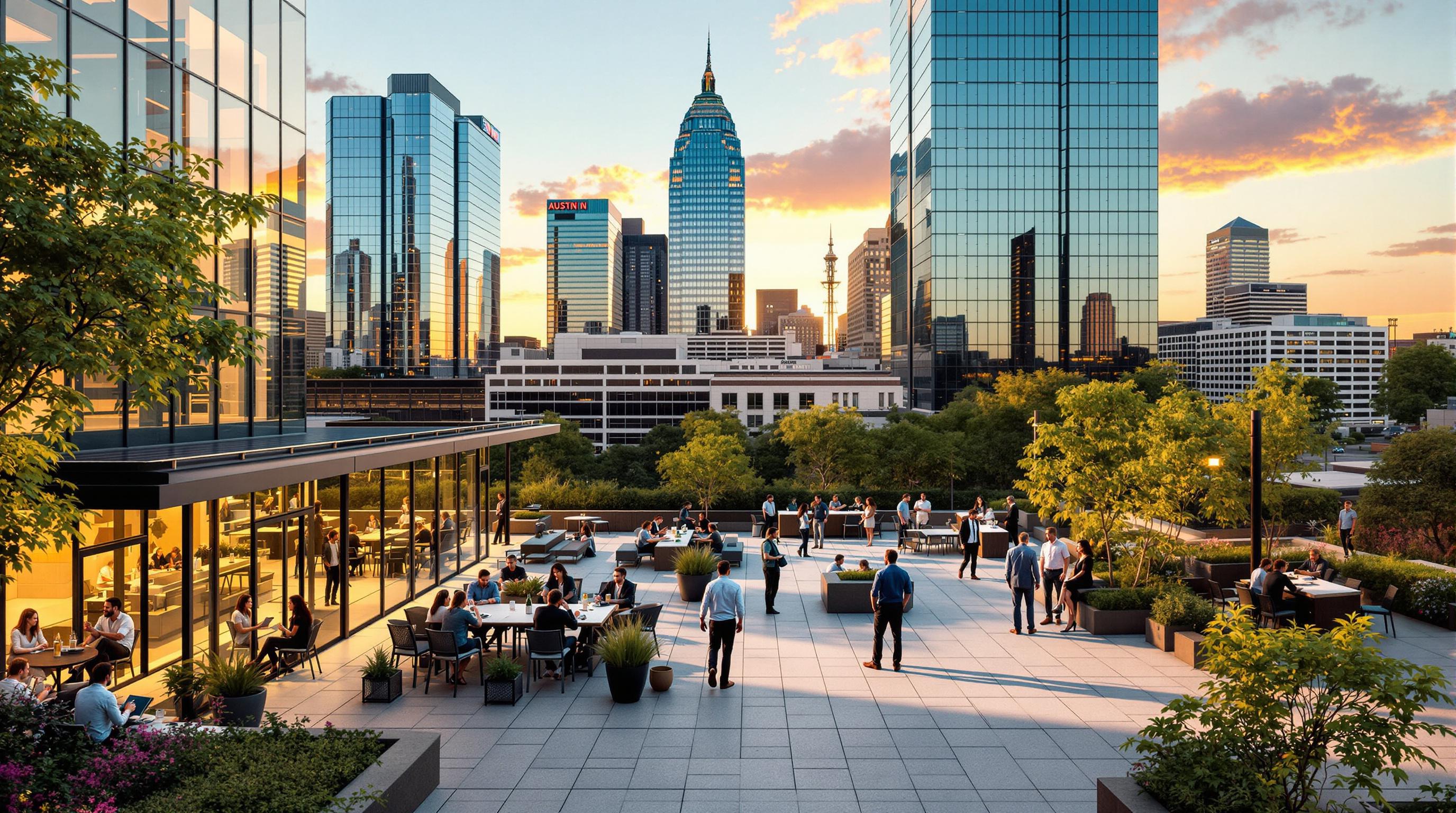Austin’s venture capital (VC) growth is driving major changes in the real estate market. Here’s the bottom line: VC funding is increasing demand for office spaces, raising property values, and fueling new developments. This affects both commercial and residential markets, especially in tech-heavy areas.
Key Impacts:
- Office Demand: Startups backed by VC are pushing up demand for premium office spaces in innovation hubs.
- Property Prices: Commercial and residential property values are rising, especially near startup clusters.
- Development Growth: New construction projects, including mixed-use developments, are transforming Austin’s skyline.
- Housing Challenges: Rapid growth is creating affordability concerns in residential neighborhoods.
For investors, timing matters. Established areas come with higher price tags, but emerging neighborhoods tied to VC activity offer early opportunities. Staying informed with local market data and expert advice is critical in navigating this dynamic landscape.
Investing in the growing startup ecosystem in Austin, Texas w …
1. Market Analysis by Austin Local Team
The Austin Local Team’s analysis highlights how venture capital is reshaping the city’s real estate market. Their findings show that commercial property values are climbing in tech-heavy areas, particularly where VC-backed startups are concentrated.
Here are three key trends influencing the market:
-
Rising Demand for Office Space
Tech startups supported by venture capital are driving demand for premium office spaces in Austin’s innovation hubs. -
Commercial Property Pricing Shifts
Established areas are seeing higher prices, while newer neighborhoods are starting to show growth in value as VC activity spreads. -
Development Boom
The city’s skyline is evolving rapidly with new mixed-use and office developments.
The team has also pinpointed opportunities in secondary markets where early-stage startups are gaining traction. Their apartment locating data shows a clear link between VC funding and increased rental demand near startup clusters. These patterns emphasize how VC investments are influencing Austin’s real estate landscape.
For investors, this means timing is everything. Established areas come with higher price tags, while emerging neighborhoods offer a chance to get in early. This analysis provides a foundation for understanding how venture capital continues to shape property trends in Austin.
sbb-itb-4c99469
2. VC Funding Effects on Property Markets
The rise in venture capital (VC) funding in Austin is leaving a noticeable mark on the local property market, particularly in up-and-coming business districts. New construction projects are a clear sign of this shift.
VC investments are now playing a direct role in shaping property developments. In commercial real estate, the growth of VC-backed companies is driving higher demand for office space. Developers are responding by designing projects specifically for startups, with features like flexible workspaces and collaborative areas. While established tech corridors continue to grow, newer areas are also seeing an uptick in development activity. These patterns highlight how VC funding is influencing Austin’s real estate landscape and creating fresh opportunities within its tech-driven economy.
Benefits and Limitations
Venture capital (VC) is playing a major role in shaping Austin’s real estate scene, driving development but also creating challenges. Building on earlier market insights from Austin Local Team, this section breaks down the key advantages and drawbacks of VC activity. The table below highlights these effects on both commercial and residential markets.
| Impact Area | Benefits | Limitations |
|---|---|---|
| Commercial Market | • Higher demand for office spaces fueled by active construction projects | • Uneven development pace between VC-focused hubs and other neighborhoods |
| Residential Market | • New housing developments adding energy to the market | • Rapid growth sparking concerns about housing affordability |
VC funding has sparked visible changes in emerging business districts, transforming Austin’s skyline with sleek office buildings and housing developments designed for the growing tech workforce. However, this rapid expansion has brought affordability issues to the forefront, particularly in residential neighborhoods.
In well-established tech corridors, property values have climbed significantly, benefiting homeowners and investors. But while some areas are evolving quickly, others are seeing slower, more gradual changes.
These trends illustrate the evolving nature of Austin’s real estate market as the city continues to expand.
Conclusion
Austin’s influx of venture capital has transformed its real estate landscape, fueling growth in both commercial and residential markets. Buyers and investors navigating these changes benefit from partnering with seasoned local experts. Market data reveals neighborhoods tied to tech hubs and VC activity are seeing notable increases in property values.
"Austin Local Team was great! Extremely grateful for a real estate agent who was knowledgeable about issues moving from out of state. Good communication and setting expectations with deadlines." – Michael C.
Real-life examples underline this trend. Dr. Alex M. shared how working with local professionals helped secure a property in Alandale below the asking price – proof of smart decision-making in a competitive environment.
Here’s a breakdown of how VC activity is influencing key market areas:
| Market Segment | Impact of VC Activity | Strategic Approach |
|---|---|---|
| Commercial Properties | Higher demand for modern office spaces | Focus on emerging business districts |
| Residential Real Estate | Property values rising in tech hubs | Target neighborhoods with VC growth |
| Investment Properties | More development opportunities | Track new projects and market trends |
This evolving dynamic shows how venture capital continues to shape Austin’s property market. With ongoing funding, growth is expected to persist, making it crucial for stakeholders to stay informed. Regular market analysis and guidance from local experts are key to spotting opportunities and managing risks effectively.






